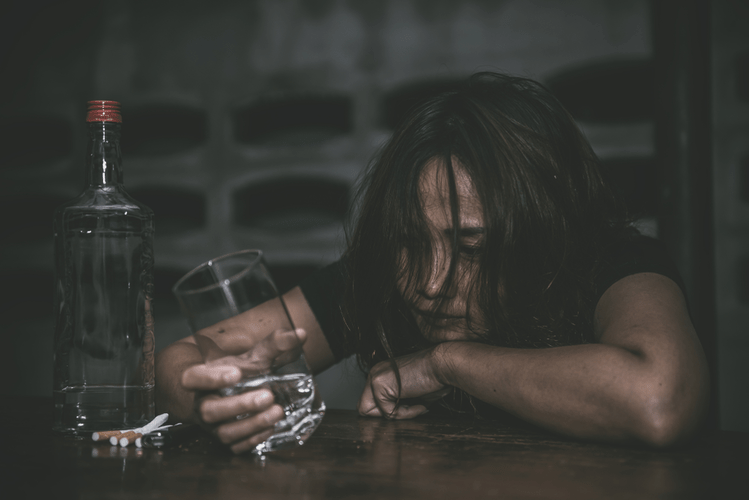Dependence vs Addiction Difference Between Dependence And Addiction
The terms ‘addiction’ and ‘dependence’ are often used interchangeably to describe an individual whose drug use or abuse has spiralled beyond their control. Even though both terms are often used to imply the same meaning, there are very important differences between addiction and dependence. I wanted to bring a few more members into this conversation on dependence vs. addiction. @stressedmesseddepressed talked about seeing what was https://ecosoberhouse.com/ thought to be addiction was actually physical dependence upon clonazepam. I thought that @johnhans @jimhd @jakedduck1 @rwinney and @sandytoes14 might have some thoughts on this topic of how one knows whether they are addicted or just physically dependent on a medication. Dependence is characterized by tolerance or withdrawal symptoms and can be a consequence of many drugs, such as pain medications, stimulants, and antidepressants.
- He currently serves on the National Education Goals Panel Resource Group on Safe and Drug Free Schools and was a member of the Committee on Prevention of Mental Disorders of the Institute of Medicine at the National Academy of Sciences.
- Dependence is defined as a psychological and physical reliance on a substance and losing control of substance abuse.
- It is not necessary to be physically dependent on a substance before an addiction forms.
Substance abuse isn’t something that should be continued until it reaches the point of addiction or dependence. During rehab, a recovering addict will be helped to re-establish physical, mental and emotional equilibrium, as they are guided towards living an abstinent and healthier life. Connect with thousands of patients and caregivers for support and answers. Connect with thousands of patients and caregivers for support, practical information, and answers. 2 or 3 years ago I tapered off it to see if it was having an effect on my neuropathy pain.
How To Tell The Difference Between Dependence vs. Addiction
An individual who is dependent on a drug may have a high tolerance, and needs to ingest higher dosages to feel the drug’s effects. If this person stops use abruptly, they will also experience acute withdrawal symptoms, as their body craves more of the drug. For a person to be diagnosed with a substance abuse disorder, they must be consistently using alcohol or drugs. As a result, their usage must be causing them psychological or physical impairment. Individuals with SUD often experience health issues, legal problems, and job loss due to their substance abuse.
- The purposeful use of the term “Addictive Disorders” in the naming of this chapter was primarily due to the addition of “gambling disorder” to the DSM, a non-substance-related disorder.
- Substance abuse is most prevalent among adults between the ages of 18 and 25, and level of education seems to be an important correlate of abuse.
- At lower risk were teens whose parents had not used marijuana and teens whose parents had not revealed their use of the drug.
It is unlikely that a person will become addicted after using a substance once, although it is possible to develop a mental health problem or to die of an overdose or another complication after one use of some substances. Physical dependence addiction vs dependence is a natural expected physiological response to drugs such as opioids, benzodiazepines, antidepressants and corticosteroids. It is characterized by withdrawal symptoms with the patient being unable to cope when the drug is stopped.
Standard Outpatient Programs
How severe these will be is often dependent on what substance you were abusing and the duration of dependence. Substance abuse, broadly defined to include abuse and dependence, exempts no one group of people from its reach. Regardless of age, gender, race or ethnic background, and level of education, according to government surveys, Americans use cigarettes, alcohol, and drugs—whether legal or not—and often do so in a compulsive fashion. Tobacco use accounted for all but 120,000 of those deaths, making it the most preventable cause of death and disease in the United States.11 The 1964 surgeon general’s report had a dramatic impact on smoking. Almost 50 percent fewer adults now smoke, but that trend stalled in 1990. This increase is reflected in the report that, every day, 3,000 children and teens begin smoking.12 The 1995 NHSDA reported also that, every day in 1994, approximately 6,300 individuals began using marijuana.

In the 1980s, the American Psychological Association sought to change this definition in the DSM (the Diagnostic and Statistical Manual of Mental Disorders). After a careful vote, “addiction” was changed to “substance dependence” and it remained that way until the DSM entered its 5th edition in 2013. Therapy can be in the form of counseling, behavioral therapy, self-help groups, group therapy, mindfulness, or a combination of modalities. Education is learning how to overcome and cope with the effects of addiction, such as compulsive cravings, and how to establish a healthier lifestyle. Together, therapy and education teach individuals how to get to the root of their addiction, defeat difficult emotions and cravings, establish healthful routines, and discover their best possible selves. If a person is exhibiting two or more of the above symptoms, professional substance use treatment is recommended.
